The Ultimate Juicy Smoked Brisket Recipe You’ll Crave Forever
Smoking a succulent brisket demands patience and skill that every backyard chef craves.
Meat lovers understand the art behind perfectly tender, mouthwatering cuts.
Seasoned pitmasters know the secret lies in slow-cooking techniques and precise temperature control.
Authentic texas-style barbecue requires dedication and passion for creating exceptional flavor profiles.
Wood chips and spice blends play crucial roles in developing complex taste sensations.
Regional traditions inspire incredible culinary techniques that elevate simple ingredients.
You’ll want to master this recipe and impress everyone at your next gathering.
Prepare to transform an ordinary meal into an extraordinary barbecue experience.
FAQs
Ensure even coverage by generously coating the entire surface with the spice rub. Massage the mixture thoroughly, making sure no spots are missed. The brisket should look completely covered with a visible layer of spices before smoking.
Spritzing helps keep the meat moist and prevents it from drying out during the long smoking process. Use beef broth to add extra flavor while maintaining the brisket’s moisture, which contributes to a more tender and juicy final result.
Low and slow cooking at 225F breaks down tough connective tissues, making the meat incredibly tender. This method allows the fat to render slowly, creating a rich, melt-in-your-mouth texture that’s characteristic of perfect smoked brisket.
Always slice against the grain to ensure tender, easy-to-chew pieces. Look for the direction of the muscle fibers and cut perpendicular to those lines, which helps break down the meat’s tough muscle strands and improves overall eating experience.
Rich and Smoky: Brisket Recipe Notes
Ingredients to Nail the Smoked Brisket
Main Protein:Spice Blend:Moisture and Cooking Aids:Optional Serving Accompaniments:Wood Chips:How to Prepare a Perfect Brisket
Step 1: Prepare the Meat
Select a high-quality beef brisket and clean your workspace thoroughly.
Using a sharp knife, carefully trim away excess fat, leaving a thin layer for rich flavor.
Pat the meat dry with paper towels to ensure perfect seasoning adherence.
Step 2: Create Flavor Explosion
Combine your spice blend with these ingredients:Massage olive oil all over the meat, then generously coat with the spice mixture, ensuring complete coverage.
Step 3: Fire Up the Smoker
Prepare your smoker by heating it to a steady 225°F.
Select wood chips like hickory or oak for deep, rich smoky flavor.
Allow the smoker to reach full temperature before adding the meat.
Step 4: Slow and Low Smoking
Place the seasoned brisket in the smoker, fat side facing up.
Close the lid and maintain a consistent temperature.
Every hour, gently spritz the meat with beef broth to keep it juicy and prevent drying.
Step 5: Wrap for Maximum Tenderness
When the internal meat temperature hits around 160°F, carefully wrap the brisket in butcher paper or heavy-duty aluminum foil.
This technique helps lock in moisture and accelerates the cooking process.
Step 6: Patience Pays Off
Continue smoking until the internal temperature reaches between 195-205°F.
This might take 6-12 hours depending on the meat’s size.
Use a reliable meat thermometer for accuracy.
Step 7: Rest and Slice Like a Pro
Remove the brisket from the smoker and let it rest for 30-45 minutes.
This allows juices to redistribute throughout the meat.
Using a sharp knife, slice against the grain for maximum tenderness.
Serve with your favorite barbecue sauce and enjoy your culinary masterpiece.
Tips That Take Brisket to the Next Level
Storing and Reheating Smoked Brisket
What to Plate with Smoked Brisket
Brisket Styles Worth Trying
Print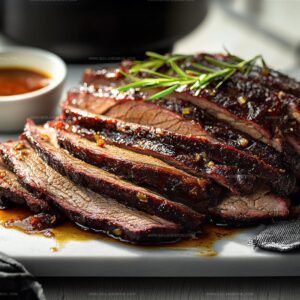
Ultimate Smoked Brisket Recipe
- Total Time: 6 hours 30 minutes
- Yield: 12 1x
Description
Smoky, tender Texas-style smoked brisket promises a mouthwatering journey through barbecue perfection. Slow-cooked over low heat with robust spices, this classic dish delivers rich, complex flavors that invite you to savor every sublime bite.
Ingredients
Main Protein:
- 56 lbs (25.4 kg) beef brisket
Spices and Seasonings:
- 2 tablespoons (30 ml) kosher salt
- 1 tablespoon (15 ml) black pepper
- 1 tablespoon (15 ml) paprika
- 1 tablespoon (15 ml) garlic powder
- 1 tablespoon (15 ml) onion powder
- 1 teaspoon (5 ml) cayenne pepper (optional)
Liquid and Oil:
- 2 tablespoons (30 ml) olive oil
- 1 cup (240 ml) beef broth (for spritzing)
Instructions
- Meticulously trim the brisket’s exterior fat, maintaining a thin 1/4-inch layer to enhance flavor and juiciness. Create a robust spice blend combining salt, pepper, paprika, garlic powder, onion powder, and cayenne pepper.
- Massage olive oil across the entire brisket surface, then generously distribute the spice mixture, ensuring complete and even coverage.
- Prepare the smoker at a consistent 225F (107C), selecting hickory or oak wood chips for a rich, deep smoky essence.
- Position the brisket fat side up in the smoker, maintaining a steady temperature. Periodically spritz with beef broth every hour to preserve moisture and prevent surface drying.
- Monitor the internal temperature closely. When it reaches approximately 160F (71C), carefully encase the brisket in butcher paper or aluminum foil to lock in moisture and promote tenderness.
- Continue smoking until the internal temperature reaches the optimal range of 195-205F (90-96C), which typically requires 6-12 hours depending on brisket size.
- Remove from heat and allow the brisket to rest for a minimum of 30 minutes, enabling juices to redistribute throughout the meat.
- Slice against the grain to maximize tenderness, presenting with complementary barbecue sauce and traditional side dishes.
Notes
- Choose high-quality beef with good marbling for maximum flavor and tenderness.
- Invest in a reliable meat thermometer to monitor internal temperature precisely during smoking.
- Patience is key when smoking brisket – low and slow cooking method guarantees melt-in-your-mouth results.
- Experiment with different wood chips like mesquite or applewood to create unique smoky flavor profiles.
- Prep Time: 30 minutes
- Cook Time: 6 hours (or up to 12 hours)
- Category: Dinner, Snacks
- Method: Smoking
- Cuisine: American
Nutrition
- Serving Size: 12
- Calories: 500
- Sugar: 0 g
- Sodium: 600 mg
- Fat: 30 g
- Saturated Fat: 12 g
- Unsaturated Fat: 18 g
- Trans Fat: 0 g
- Carbohydrates: 1 g
- Fiber: 0 g
- Protein: 50 g
- Cholesterol: 120 mg

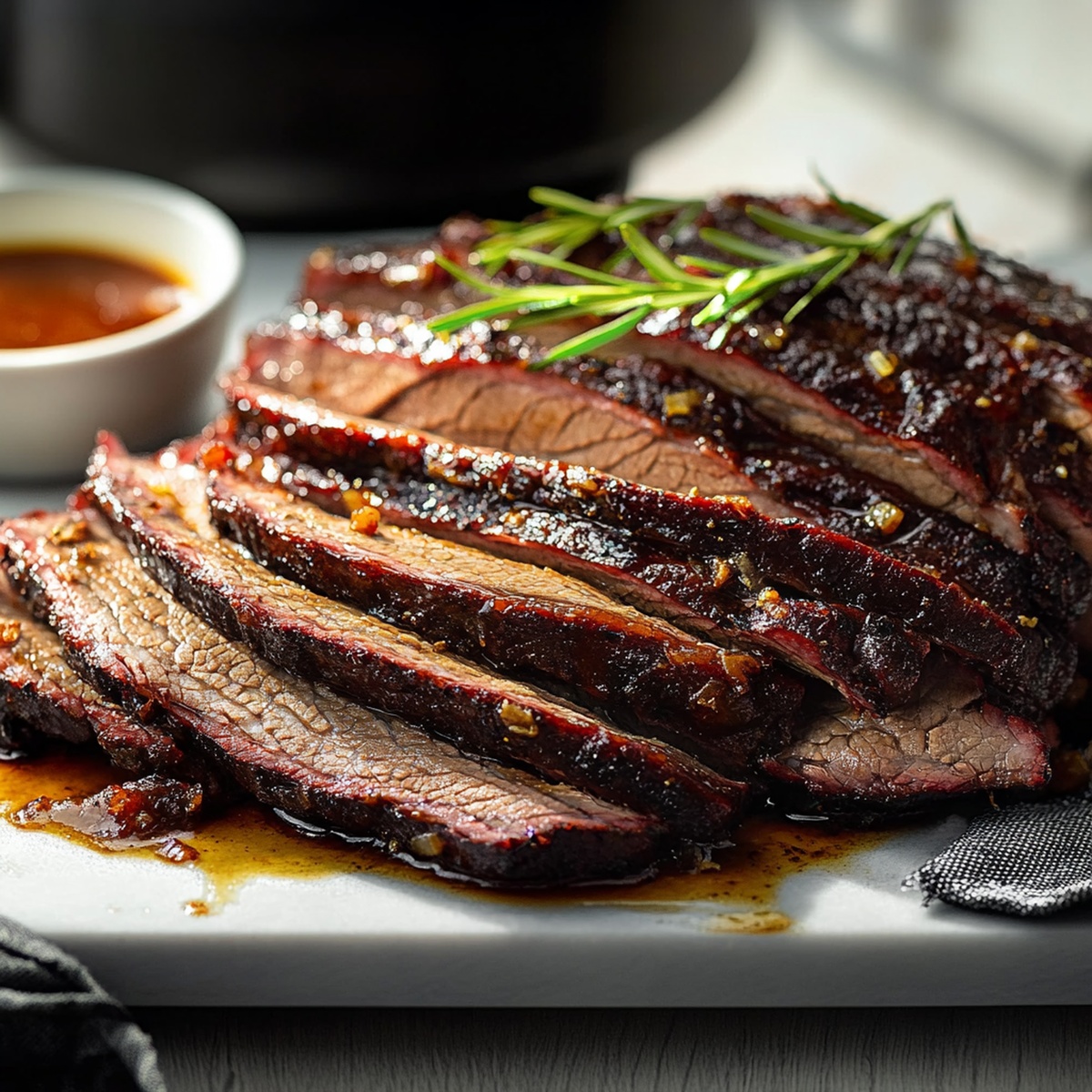
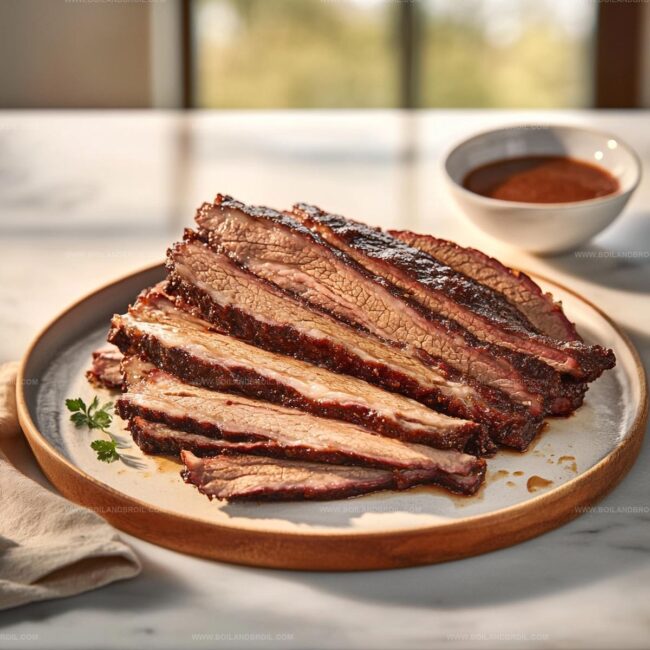
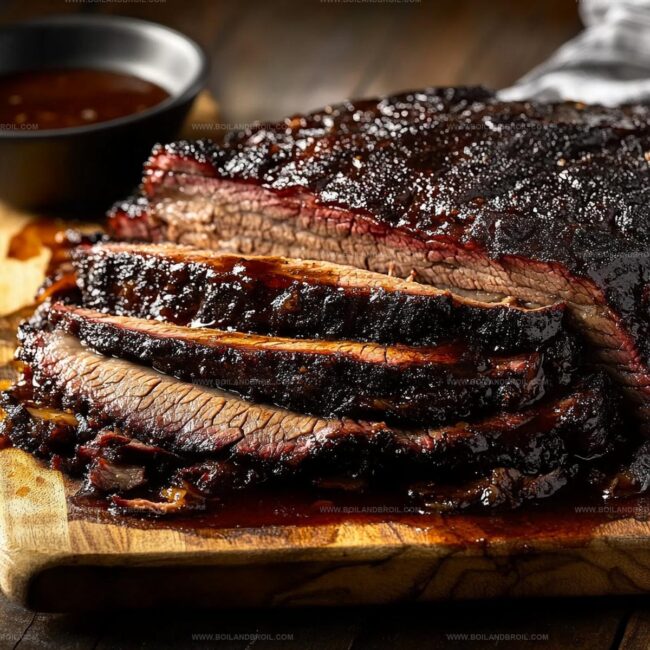
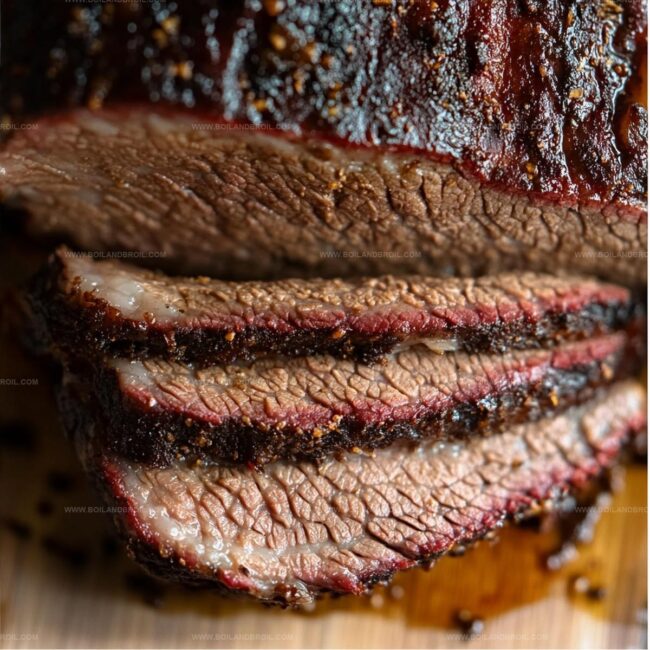
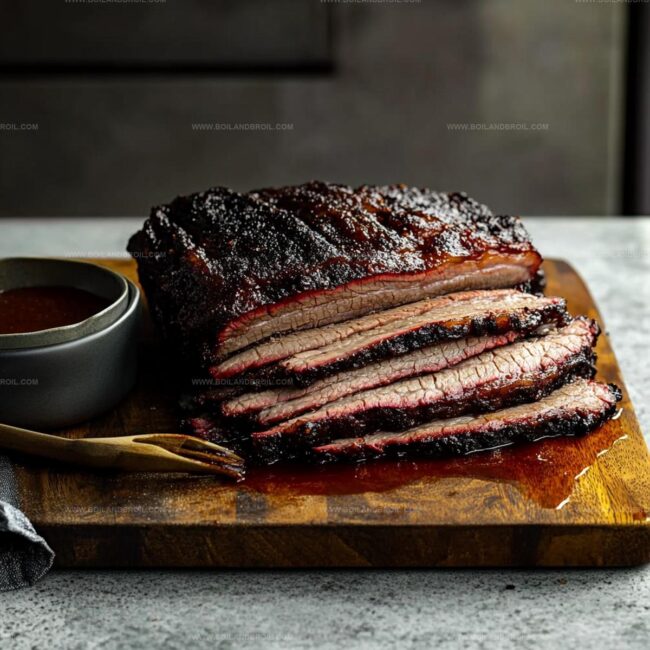
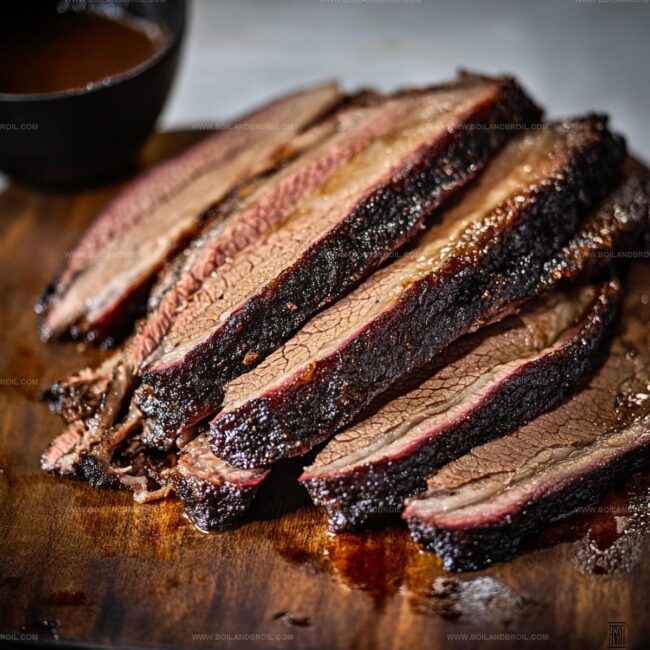
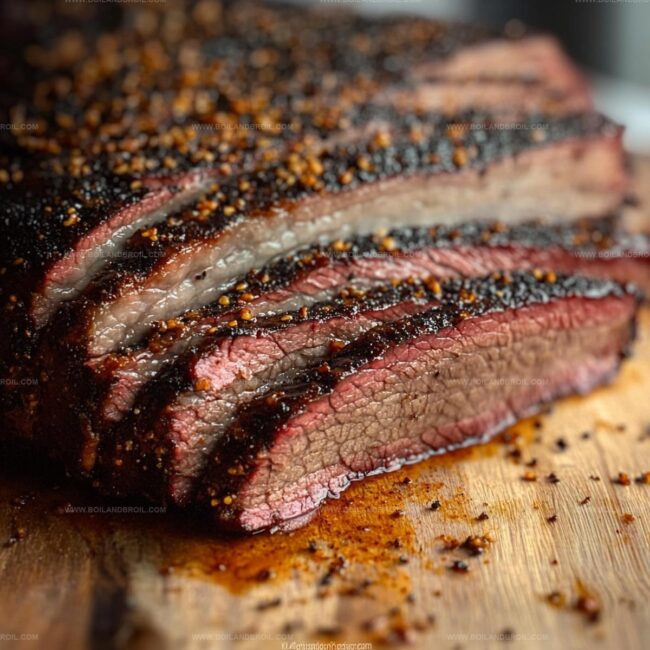
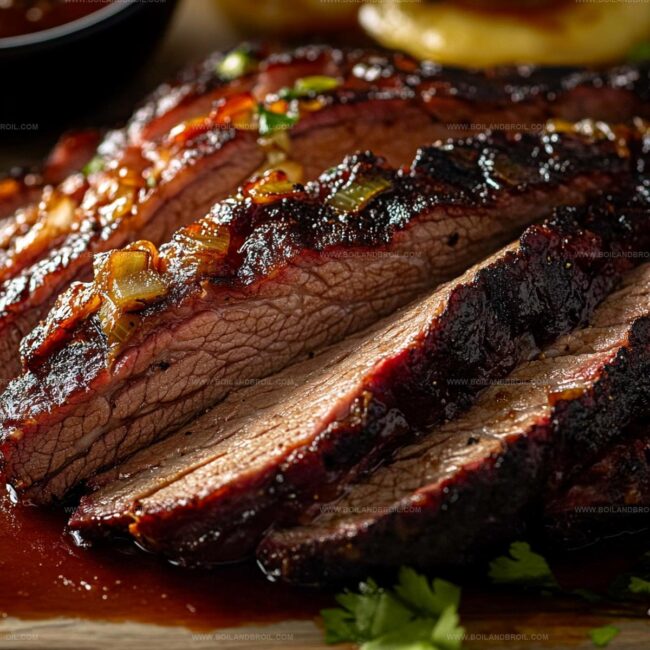
Clara Thompson
Recipe Developer & Culinary Educator
Expertise
Developing accessible single-serving recipes, Food writing and content creation, Plant-based and allergen-friendly cooking, Culinary education and workshop facilitation
Education
Oregon Culinary Institute (Portland, OR)
Diploma in Culinary Arts
Specialized in plant-based cooking and sustainable kitchen practices.
Portland Community College
Certificate in Food Writing and Media
Focused on recipe writing, food photography, and digital content creation.
Clara’s food journey began with a curiosity for color, texture, and ingredients pulled straight from the garden. Her background in plant-forward cooking and creative writing gives her a unique edge – she makes healthy, flavorful food feel inviting, not intimidating.
She specializes in meals that work for busy lives and different diets, all without sacrificing taste. Clara’s voice comes through in every recipe she writes – clear, kind, and encouraging.